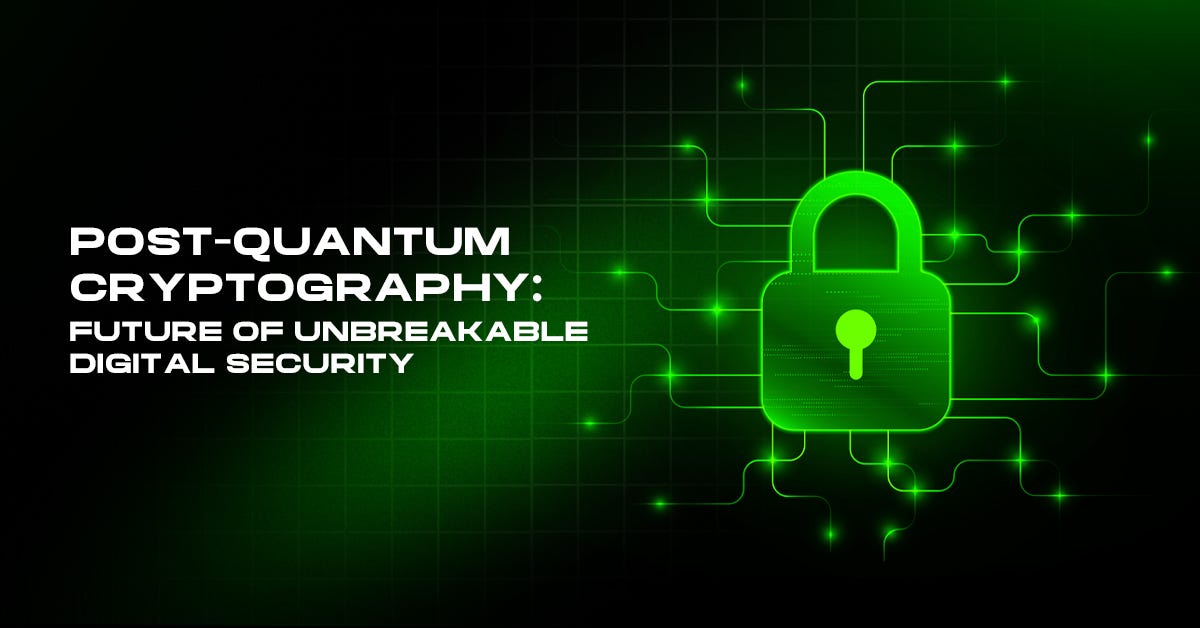
What do we do when quantum computers can crack the encryption schemes that we are using now? The solution is post-quantum cryptography, a new discipline to safeguard our data in an age of quantum computers. With cyber attacks growing sophisticated with each passing day, there is a growing need to deploy post-quantum cryptography.
This article discusses the importance, procedure, and future of post-quantum cryptography, the reason why it has become the backbone of secure digital communication and infrastructure around the world.
Understanding the Need for Post-Quantum Cryptography
Over the last two decades, traditional encryption algorithms such as RSA and ECC have ensured secure digital communications. They depend on the computational difficulty of the said problems, e.g., discrete logarithms and integer factorization, naturally broken-proofed by the conventional computers.
However, what is to be hitherto turned upside down is the fast quantum computing. Quantum computers, and specifically Shor’s algorithm, can compute these problems exponentially more quickly, making all current forms of encryption obsolete.
This instantly raises the imperative for the introduction of new methods of cryptography that will be able to stand against such seriously powerful computation-based attacks. Post-quantum cryptography is the science that develops cryptography algorithms that will not be vulnerable to quantum attackers.
It is not just a replacement for the insecure systems, but also lays out new standards for digital security in the long run. These, like the National Institute of Standards and Technology (NIST), are leading the way in standardizing such solutions and getting the world infrastructure ready for the quantum age.
The Role of Post-Quantum Cryptography in Digital Infrastructure
As our virtual world evolves to become more distributed, decentralized, and integrated internationally, the requirement for secure and quantum-resistant cryptography has never been greater. Major sectors such as finance, medicine, and intellectual property rely on the integrity of systems to maintain the confidentiality and integrity of the data. Post-quantum cryptography fits here as a core part that provides encryption schemes resistant to both classical and quantum computer attacks.
Now, companies are already actively searching for quantum-resistant solutions to quantum-proof their business processes against threats of the future. Cloud services and messaging systems start to implement next-generation cryptographic protocols to satisfy increasing privacy and regulatory demands.
Sectors such as aerospace, defense, and energy infrastructure recognize the strategic benefits of implementing quantum-secure communications channels to protect national security and mission-critical activities. With today’s implementation of quantum-resistant algorithms, companies can lay the foundation stone for tomorrow’s secure and scalable digital ecosystem so that digital world trust flows smoothly.
Emerging Trends in Post-Quantum Cryptography
The area of quantum-resistant cryptography is developing extremely rapidly, with researchers exploring a broad set of cryptographic schemes. These include lattice-based schemes, code-based cryptography, multivariate polynomial cryptography, and hash-based digital signatures — each possessing different strengths for resisting both standard and quantum attacks.
Of them, lattice-based approaches have received major interest due to their efficiency-security balance. CRYSTALS-Kyber and Dilithium are some of the best among the current participants in the NIST standardization process due to their sound construction and ability to fit into existing infrastructure.
Their quantum-resistant computational lightness and toughness make them highly valuable in applications from secure messaging to banking. In addition, the ecosystem is experiencing the development of hybrid solutions combining classical and quantum-resistant cryptographic layers for backward compatibility and gradual evolution. With changing cyber defense strategy, post-quantum cryptography stands as the key to creating robust, scalable systems for the quantum-enabled future.
Quantum-Ready Cybersecurity with Post-Quantum Security
Enabling cybersecurity infrastructure for the quantum age involves more than just replacing current cryptographic practices — it necessitates a well-designed, strategic shift. Hybrid encryption schemes that integrate classical and quantum-resistant approaches are a common method. It is backward compatible and accumulates a stronger security level progressively.
The multi-layered infrastructure keeps disruption to a minimum while offering continued strong security during the transition process. Adopting post-quantum security not just gets systems ready for future quantum attacks but also protects them against present attack methods. As industries and governments transition into quantum resilience, incorporating forward-thinking encryption methods like this is vital in keeping confidential information safe and fostering trust in critical infrastructure.
How Quantum Computers Disrupt Traditional Encryption
Quantum computers use superposition and entanglement to function, enabling them to process calculations much more quickly than traditional computers. Quantum algorithms such as Shor’s are able to rapidly factor large numbers using this capacity, essentially cracking RSA encryption, while Grover’s algorithm can seriously lower symmetric-key systems. These capabilities comprise the pillars of digital security as of today, including banking, communication, and national defense networks.
The ramifications are great — if not held in check, quantum computers would make all current cryptographic security worthless. Here comes post-quantum cryptography and a new crop of algorithms to stand up against those threats. As quantum computing speeds up, so must the transition. It is no longer a choice but a necessity to future-proof our encryption to ensure global cybersecurity.
Securing Emerging Tech with Post-Quantum Blockchain Technology
Blockchain, renowned for its decentralized and immutable character, is facing tremendous threats from the advent of quantum computing. Quantum algorithms can crack public keys associated with wallet addresses and transaction confirmations and expose vulnerable systems to hacking. To push these threats back, innovators are turning to post-quantum blockchain technology, which entails implementing quantum-resistant encryption methods into blockchain infrastructure directly.
Initiatives such as NCOG are leading this revolution by adding secure cryptographic methods to smart contracts, decentralized storage layers, and consensus protocols. All of them are crucial to making blockchain systems quantum-resistant for the future while keeping with the fundamental principles of trust and transparency that characterise the technology.
Methodologies for Protecting AI and Data Integrity
To safeguard human information and the systems that interact with it, particularly artificial intelligence, safeguarding the information underneath is paramount. AI can be trained on adulterated or sensitive information without encryption, with the possible outcome of leading to biased, unsafe, or unethical decisions. Post-quantum cryptography…
Comments
Post a Comment